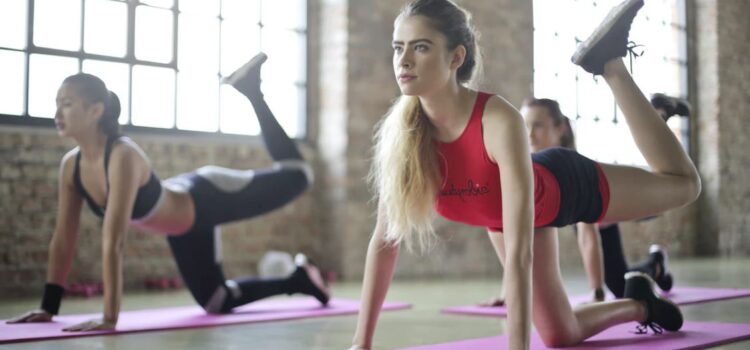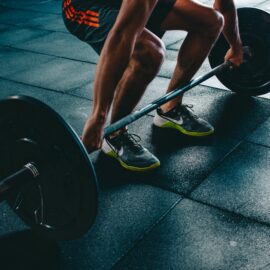

This article is an excerpt from the Shortform book guide to "Outlive" by Peter Attia. Shortform has the world's best summaries and analyses of books you should be reading.
Like this article? Sign up for a free trial here.
Would you like to add quality years to your life? What do you envision doing when you’re older? Do you want to keep tending your garden, playing golf, or competing in 5Ks?
According to physician Peter Attia, exercise is the number one habit you can practice to improve your health. As he writes in his book Outlive, consistent exercise significantly increases your lifespan and helps ward off all the major chronic diseases.
Read more to learn about the difference exercise makes and the three types of workouts Attia recommends.
Peter Attia on Exercise
According to Peter Attia, exercise can help you avoid disease so you can keep doing the things that bring you joy. He outlines a set of exercise guidelines intended to help you reach this goal: to maintain enough physical fitness to do everything active you want to do for as long as possible. If you want to continue playing basketball with your friends through your twilight years, or if you just want to be able to walk your dog and tend your garden, Attia recommends regularly practicing three types of exercise: Zone 2 endurance training, VO2 max sprint training, and muscle-centered strength training. Let’s discuss each of these in turn.
(Shortform note: Research supports Attia’s decision to offer an exercise regimen intended to maximize independence in old age. Happiness experts have found that autonomy—the feeling that you’ve chosen to do something rather than being forced to do it—in large part determines how much you enjoy whatever you’re doing. Elderly people who feel like their weak bodies are forcing them into a sedentary life may find themselves unhappy due to lack of autonomy, even if their lives as retirees are full of pleasant activities.)
Build Endurance Through Zone 2 Training
First, Attia recommends regular “Zone 2” aerobic exercise. Exercise experts describe the intensity of a given exercise using one of five “zones.” Zone 2 is light to moderate exercise: pushing yourself just hard enough that it’s slightly uncomfortable to speak.
Zone 2 exercise is beneficial because it causes your cells to produce more high-quality mitochondria—organelles in your cells that metabolize glucose and fatty acids into energy. The more mitochondria you have and the stronger they are, the more fat and glucose they can burn. This frees up storage space for calories you eat that would otherwise cause metabolic dysfunction.
Attia recommends that the average person engage in Zone 2 exercise for at least three hours a week. That said, if you’re recovering from a sedentary lifestyle, Attia notes that two 30-minute sessions per week are enough to drastically reform your health.
Stretch Your Physical Limits Through VO2 Max Training
Second, Attia recommends increasing your VO2 max: the volume of oxygen that your body can effectively transport and utilize to create energy while you’re pushing yourself to your physical limits. This number, more than any other, precisely reflects your overall physical fitness. The higher your VO2 max, the more physical activities you’ll be able to perform and enjoy.
Why do you need a high VO2 max to be physically fit? Attia explains that your cells need oxygen to convert glucose and fats into energy. Exercise increases the demand for oxygen throughout your body, and the more intensely you exercise, the more likely it is that your oxygen demand will exceed your VO2 max. At this point, your cells lose oxygen and must resort to less efficient means of energy generation. You’ll hit your physical limit and won’t be able to complete whatever physical activity you’re trying to do.
VO2 max declines sharply as you age. So, to do all the physical tasks you want to in your elderly years, compensate for this decline by training your VO2 max as much as possible. Attia adds that, aside from enabling an active lifestyle, a high VO2 max will reduce your risk of disease—research shows that VO2 max is strongly correlated with a longer lifespan.
To improve your VO2 max, Attia recommends a high-intensity interval exercise rhythm: Warm up, then perform four-minute spurts of aerobic exercise at the fastest pace you can steadily maintain for those four minutes. Take four minutes of recovery by exercising at a slow, easy pace. Repeat this sprint-rest cycle four to six times, then cool down. Doing this once a week is enough to gradually raise your VO2 max.
Build Muscle Through Strength Training
Finally, Attia recommends building as much muscle as possible. Research shows that, the bigger and stronger your muscles are, the longer you’ll live and the healthier you’ll be.
One reason for this is that the more muscle mass you have, the easier it is to be metabolically healthy. Attia states that muscle tissue is better at metabolizing glucose than other parts of your body, So, the more muscle you have, the easier it is to keep your blood sugar low and stable. Additionally, building muscle increases your capacity to store glucose as glycogen for short-term energy consumption, rather than storing it as potentially harmful fat.
Unfortunately, around the time someone turns 65, they begin losing muscle at an alarming rate. Unless you build up above-average muscle mass before this time, your muscle mass will drop low enough during your elderly years to leave you significantly more vulnerable to chronic disease and injury. Attia recommends regular strength training (specifically, weightlifting) to prevent this as much as possible.
However, Attia emphasizes that, if you perform intense strength training exercises poorly, they can do more harm than good—specifically, if they cause you to badly injure yourself. Train yourself to use the proper form when practicing strength exercises, and use lighter weights until you’ve built up the bodily awareness you need to avoid injury when lifting heavier weights.
Exercise: Assess Your Exercise Habits
Healthy exercise habits are a foundational component of a healthy, longevity-focused lifestyle. Assess your current fitness routine, and brainstorm how you could improve it.
- Describe your current exercise routine. As an estimate, how many hours a week do you exercise? How much of that time do you spend training Zone 2 endurance, VO2 max, and muscle strength? For example, you may play ultimate frisbee for 90 minutes once a week (Zone 2, some VO2 max) and lift weights at the gym for 45 minutes twice a week (muscle strength).
- What’s one change you could make to improve your exercise routine? Recall that Attia recommends three hours a week of endurance training, one session of VO2 max training a week (around 45 minutes), and enough strength training to consistently gain and maintain muscle. (For example, you could supplement your ultimate frisbee with 30-minute jogs three days a week and intentionally run sprints while playing ultimate frisbee.)

———End of Preview———
Like what you just read? Read the rest of the world's best book summary and analysis of Peter Attia's "Outlive" at Shortform.
Here's what you'll find in our full Outlive summary:
- A guide on how to extend the active and fulfilling part of your life
- How to circumvent the mental and physical decline that often comes with age
- The one chronic condition that can cause four of the most deadly diseases






